|
Page < 1 2 3 4 5 6 7 8 9 10 11 >
Hindu-allergic
Secularism?
Marxist Distorians
Arun Shourie writes: "The design is... to
attribute evil to the religion of our country, Hinduism; it is to
present Islam as the great progressive force which arose; it is to lament the
fact that humanity did not heed the teachings of progressive men like Muhammad
-- till the "remarkable and comprehensive" Russian Revolution of
1917!"
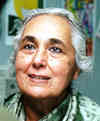 Where was Romila Thapar's moral indignation when
this skewed history was being imposed on the impressionable children of West
Bengal? Where was Romila Thapar's moral indignation when
this skewed history was being imposed on the impressionable children of West
Bengal?
(source: Indians
will no longer be impressed by Marxist histrionics - By Rajeev Srinivasan rediff.com).
Refer to
Eminent Historian Displeased with The Ayodhya Verdict – By Dr. Koenraad Elst
and
Media Manipulation
- By Sandeep and
Ayodhya: Has India really moved on? – By Amitabh Tripathi
and
Verdict leaves ‘secular intellectuals’ aghast – By Swapan Dasgupta
and
Ram Ki Nagari, once again – By Kanchan Gupta
Refer
to Ethnic
cleansing of Hindus in
Bangladesh - muktomona.com. Refer to Left
loves Islamism – By Daniel Pipes July 15th 2008 Op-ed
daily pioneer.com.
Watch
Obsession:
Radical Islam's War Against The West. In Arun Shourie's
book,
Eminent
Historians: Their Technology, Their Line, Their Fraud - By Arun Shourie Harper
Collins India ISBN 8172233558 gives an
account of what these Indian objective Historians have been up to. For
more refer to Hindu
Holocaust Museum. Refer to Heroic
Hindu Resistance to Muslim Invaders (636 AD to 1206 AD) - By Sita Ram Goel.
Voice of India, New Delhi.
Refer to Ignore
this genocide, we're secular - By Rajeev Srinivasan - rediff.com - The
selective amnesia of the English media in India is simply breathtaking. There
appears to be a cardinal rule: Never publish anything that would be in the least
bit negative about Muslims in general and Pakistanis in particular; or about
Christians; or about Marxists in general and the Chinese in particular.
.
The so-called
objective rational Historians, as against the "national" Historians,
either tow the western liberal line or the western Marxist line and write their
Histories so as to present the Hindus as the extremists who are engaged in myth
making. Unfortunately, it will take a long time for undoing the harm done by the
Marxist historians to the Indian psyche: "they have used these institutions
to sow in the minds of our people [the Hindus] the seeds of self-hatred.
(For more please refer to IndiaStar
Review and Indians
will no longer be impressed by Marxist histrionics - R. Srinivasan -
rediff.com). For more information, refer to Romila
Thapar on Mahmud Ghaznavi - By Koenraad
Elst).
However, according to the
official court chronicle, Aurangzeb
"ordered all provincial governors to
destroy all schools and temples of the Pagans and to make a complete end to all
Pagan teachings and practices." The chronicle sums up the destructions like
this: "Hasan Ali Khan came and said that 172 temples in the area had been
destroyed...His majesty went to Chittor, and 63 temples were destroyed...Abu
Tarab, appointed to destroy the idol-temples of Amber, reported that 66 temples
had been razed to the ground."
(Note:
In an interview in Le
Monde,
same Marxist historian, Romila
Thapar cheerfully
predicted that India won't be able to stay together. Effectively, to a question
about secessionist movements, she was quoted
as saying, and did indeed say to the Le Monde interviewers:
"What one can foresee,
perhaps, for the end of the next century, is a series of small states
federated within a more viable single economic space on the scale of the
subcontinent."
(source: Interview in Le
Monde - Un entretien avec Romila
Thapar - with Patrice De Beer & Vijay
Singh - Le Monde, 11 May 1993).
 Serge
Trifkovic author of The
Sword of the Prophet: History, Theology, Impact on the World
has pointed out: Serge
Trifkovic author of The
Sword of the Prophet: History, Theology, Impact on the World
has pointed out:
"During the
struggle for independence, Gandhi and Nehru downplayed historic
Moslem atrocities so that they could pretend a facade of
Hindu-Moslem unity against the British. (Naturally, this façade
dissolved immediately after independence and several million
people were killed in the religious violence attendant on
splitting British India into India and Pakistan).
After
independence, Marxist Indian writers,
blinkered by ideology, suppressed the truth about the Moslem
record because it did not fit into the Marxist theory of history. Nowadays,
the Indian equivalent of political correctness downplays Moslem
misdeeds because Moslems are an "oppressed minority" in
majority-Hindu India.
"And Indian leftist
intellectuals always blame India first and hate their own Hindu
civilization, just their equivalents at Berkeley blame
America and the West."
"Unlike
Germany, which has apologized to its Jewish and Eastern European
victims, and Japan, which has at least behaved itself since WWII,
and even America, which has gone into paroxysms of guilt over what
it did to the infinitely smaller numbers of Red Indians, the
Moslem aggressors against India and their successors have not even
stopped trying to finish the job they started. To this day,
militant Islam sees India as "unfinished business" and
it remains high on the agenda of oil-rich Moslem countries such as
Saudi Arabia, which are spending millions every year trying to
convert Hindus to Islam. One may take some small satisfaction in
the fact that they find it rather slow going. "
(source:
Serge
Trifkovic - frontpagemag.com).
For
more on Islamic Terrorism refer to chapter on Glimpses
XV and
to Al-Qaeda
letter says Taj next target
- ibnlive.com.

(image
source: History of
India - By A V Williams Jackson).
***
As for this equality the facts are that Islam
practiced slavery on an unprecedented scale, and that its treatment of Kafirs
was anything but brotherly (unless you think Aurangzeb's treatment of his
broad-minded brother Dara Shikoh is normative).
Tolerance
in Hinduism can be found in books like the Rig-Veda
and the Bhagavad Gita:
"Let good thoughts come to us from
all sides", or "The truth is one but the wise call it by many
names", or Krishna saying that "Whoever invokes a deity by
whatever name, it is Me he invokes".
"For 50 years this bunch (leftist
historians) has been suppressing facts and inventing lies. How
concerned they pretend to be about that objective of the ICHR! How does this
concern square with the guidelines issued by their West Bengal Government in
1989 which Outlook magazine itself quoted -
"Muslims rule should never attract any criticism.
Destruction of temples by Muslim rulers and invaders should not be
mentioned."?
(source: Eminent
Historians: Their Technology, Their Line, Their Fraud - By Arun Shourie Harper
Collins India ISBN 8172233558 p.
9). Refer to Ignore
this genocide, we're secular - By Rajeev Srinivasan - rediff.com). Refer
to Heroic
Hindu Resistance to Muslim Invaders (636 AD to 1206 AD) - By Sita Ram Goel.
Voice of India, New Delhi.
Marxist
history's Pak perspective - By Sandhya Jain
 Pakistani
textbooks of the medieval era resonate with the heroic exploits of Islamic
invaders such as Arabs, Central Asians, Turks, Persians and Afghans who
mercilessly plundered Peshawar, Lahore, Multan and Sind for centuries. Both the
Pakistani and old NCERT textbooks fail to mention that Arab forays into Gujarat
and Rajasthan were successfully repelled for decades by martial groups like the Pratiharas.
Indeed, the Arabs in Sind failed to make headway east of the Indus for hundreds
of years. Pakistani
textbooks of the medieval era resonate with the heroic exploits of Islamic
invaders such as Arabs, Central Asians, Turks, Persians and Afghans who
mercilessly plundered Peshawar, Lahore, Multan and Sind for centuries. Both the
Pakistani and old NCERT textbooks fail to mention that Arab forays into Gujarat
and Rajasthan were successfully repelled for decades by martial groups like the Pratiharas.
Indeed, the Arabs in Sind failed to make headway east of the Indus for hundreds
of years.
The kid-glove treatment of Islam in old NCERT textbooks goes
to absurd lengths. Arjun
Dev's Story
of Civilisation discusses Prophet Muhammad and the first three Khalifas, but
does not mention the Sunni-Shia schism and the violent death of the Prophet's
son-in-law. Yet while writing about the Bhakti movement, he emphasizes the
so-called divisions in Hindu society.
Both
Satish Chandra (Medieval India for Class XI) and Arjun Dev glorify
Islam as
an egalitarian, scientific, beneficent civilization and carefully avoid
mentioning jihad and the extremely violent nature of Arab expansion, which even
Pakistani intellectuals call "Arab imperialism."
This conscious falsification of facts has naturally given rise to controversies
over the old books.
But
in India, any depiction of Hindu bravery and success in thwarting the Islamic
invaders is labelled communal; "secularism" demands showing Hindus as
welcoming Muslim rule.
Thus, regarding Mahmud of Ghazni's forays into India, Satish Chandra states that
Anandapala's father was routed several times by the raider. Ignoring the heroism
of native defenders, he praises Mahmud's courage. Personally, I felt nauseated
by Chandra's sycophantic assertion: "Mahmud marched across Rajputana in
order to raid the fabulously rich temple at Somnath without encountering any
serious resistance on the way".
Actually,
fifty thousand civilians died defending the city and Mahmud was so delighted
after destroying the temple and its principal icon that he assumed the title
"butshikan" (destroyer of images).
Yet Chandra defends Mahmud in precisely the same way as the Pakistani textbooks
and pompously declares: "It
is not correct to dismiss Mahmud as just a raider and plunderer." Actually,
those of us who are fighting for a true history of India have no desire to
"dismiss" Mahmud. Our struggle is to explicitly "admit" him
at the Bar of History as raider, plunderer, iconoclast, et al.
An
old Arab once extolled the Hindu virtue of undying loyalty: "No moth burns
itself on a flame that is dead, except in Hindustan."
(source:
Marxist
history's Pak perspective - By Sandhya Jain -
dailypioneer.com - August 16 2004).
"One
example that helps to unpack this problem of political correctness
can be found in discussions of the destructions of the Buddhist
universities at Taxila and Nalanda. These two events are often
cited as examples of the negative impact the Islamic invasions had
on India's sciences and education. Prior to its destruction,
Nalanda University had tens of thousands of students and provided
"free education and residence for ten years or more" and
"accepted students of other faiths [besides Buddhism] and
instructed all in the Vedas, Philosophy, Grammar, Rhetoric,
Composition, Mathematics, and Medicine in addition to Buddhist
doctrines. It attracted students from different parts of India,
China, and Southeast Asia."
(source:
The
Groan-I: Loss of Scholarship and High Drama in 'South Asian' Studies -
By Yvette C. Rosser - infinityfoundation.
For more information on Nalanda, please refer to chapter on Education
in Ancient India).
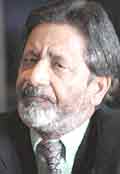 Noble laureate V. S.
Naipaul has said "The
millennium began with the Muslim invasions and the grinding down of the
Hindu-Buddhist culture of the north. This is such a big and bad event that
people still have to find polite, destiny-defying ways of speaking about it.
In art books and history books, people write of the Muslims "arriving"
in
India, as though the Muslims came on a tourist bus and went away again. The
Muslim view of their conquest of India is a truer one. They speak of the triumph
of the faith, the destruction of idols and temples, the loot, the carting away
of the local people as slaves, so
cheap and numerous that they were being sold for a few rupees.
The architectural evidence- the absence of Hindu monuments in the north
is convincing enough. This conquest was unlike any other that had gone before.
There are no Hindu records of this period. Defeated
people never write their history. The victors write the history. The victors
were Muslims. For people on the other side it is a period of darkness." Noble laureate V. S.
Naipaul has said "The
millennium began with the Muslim invasions and the grinding down of the
Hindu-Buddhist culture of the north. This is such a big and bad event that
people still have to find polite, destiny-defying ways of speaking about it.
In art books and history books, people write of the Muslims "arriving"
in
India, as though the Muslims came on a tourist bus and went away again. The
Muslim view of their conquest of India is a truer one. They speak of the triumph
of the faith, the destruction of idols and temples, the loot, the carting away
of the local people as slaves, so
cheap and numerous that they were being sold for a few rupees.
The architectural evidence- the absence of Hindu monuments in the north
is convincing enough. This conquest was unlike any other that had gone before.
There are no Hindu records of this period. Defeated
people never write their history. The victors write the history. The victors
were Muslims. For people on the other side it is a period of darkness."
(source: V.S.
Naipual interview - Outlook India November 15 1999). For
more on Naipaul, refer to chapter on Quotes
251-270).
Trinidad-born V S Naipaul says Hindu
militancy is a 'creative force'. "Dangerous or not, it's a necessary
corrective to history and will continue to remain so."
"There has
probably been no imperialism like that of Islam and the
Arabs." "Islam seeks as an article of faith to erase the
past; the believers in the end honour Arabia alone; they have
nothing to return to. Islam requires the convert to accept that
his land is of no religious or historical importance; its relics
were of no account; only the sands of Arabia are sacred."
Asked How did
you react to the Ayodhya incident? Naipaul answered: "Not as
badly, as the others did, I am afraid. The people who say that
there was no temple there are missing the point. Babar,
you must understand, had contempt for the country (that) he had
conquered. And his building of that mosque was an act of contempt
for the country."
(source: Interview
by Dilip Padgaonkar The Times of India 18 July 1993).
Sir V.
S. Naipaul asserts that Islam in the Indian sub-continent was much
more disruptive than British colonial rule. In Among
The Believers he asserts
that Islam is an eraser of past histories, that wherever Islam
conquers it determinedly stamps out preceding civilisations, just
as in India and Indonesia, it stamped out the Buddhist-Hindu
legacy and destroyed historical memory.
"In India, unlike
Iran, there never was a complete Islamic conquest. Although the
Muslims ruled much of North India from 1200A.D. to 1700A.D., in
the 18th century, the Mahrattas and the Sikhs destroyed Muslim
power, and created their own empires, before the advent of the
British....The British introduced the New Learning of Europe, to
which the Hindus were more receptive than the Muslims. This caused
the beginning of the intellectual distance between the two
communities. This distance has grown with independence....Muslim
insecurity led to the call for the creation of Pakistan. It went
at the same time with an idea of old glory, of the invaders
sweeping down from the northwest and looting the temples of
Hindustan and imposing faith on the infidel. The fantasy still
lives: and for the Muslim converts of the subcontinent it is the
start of their neurosis, because in this fantasy the convert
forgets who or what he is and becomes the violator."
(source:
http://www2b.abc.net.au/news/forum/forum43/posts/topic16200.shtm).
In
the wake of the September 11 attacks, he argued that Islam
destroyed the cultures of peoples who converted to it, comparing
its "calamitous effect" on the world with colonialism.
He
has said that he does not have time to read the works of Salman
Rushdie and Arundhati Roy.
(source:
Naipaul
accuses Saudi Arabia of financing terrorism - hindustantimes.com).
"How
do you ignore history? But the nationalist movement,
independence movement ignored it. You read the Glimpses of World
History by Jawaharlal Nehru, it talks about the mythical past
and then it jumps the difficult period of the invasions and
conquests. So you have
Chinese pilgrims coming to Bihar, Nalanda and places like that.
Then somehow they don't tell you what happens, why these places
are in ruin.
They
never tell you why Elephanta island is in ruins or why
Bhubaneswar was desecrated.

Great
Temple of Bhubaneswar
(image
source: History of
India - By A V Williams Jackson).
For
a documentary on Hindu temples, refer to The
Lost Temples of India.
***
You
see, I am less interested in the Taj
Mahal which is a vulgar, crude building, a display of power
built on blood and bones. Everything
exaggerated, everything overdone, which suggests a complete
slave population. I would like to find
out what was there before the Taj Mahal. But
I would like to see this past recovered and not dodged. That
foolish man Nirad Chaudhuri, who wrote one good book, then went
into kind of absurd fantasy, he built a whole book around
somebody who came with the invaders, Al-Beruni, who said, “the
Hindus are very violent and aggressive people”. Their land is
being taken away from them, they are being destroyed and
enslaved and he says this. This foolish man Chaudhuri builds a
book around this statement; that is the kind of absurdity we
have to avoid."
(source:
'How
do you ignore history?' - interview -
economictimes.indiatimes.com - January 13 ' '03).
Refer to Heroic
Hindu Resistance to Muslim Invaders (636 AD to 1206 AD) - By
Sita Ram Goel. Voice of India, New Delhi.
Nobel Laureate Sir
V S Naipaul
says:
"Let
us consider two late dates. In 1565, the year after the birth of Shakespeare,
Vijayanagar in the south is destroyed and its great capital city laid waste. In
1592, the terrible Akbar ravages Orissa in the east.
This means that while a country like England is preparing for greatness under
its great queen, old India, in its sixth century of retreat, is still being
reduced to nonentity. The wealth and creativity, the artisans and architects of
the kingdoms of Vijayanagar and Orissa would have been destroyed, their light
put out.
"You say that India has
a secular character, which is historically unsound. You say that Hindu militancy
is dangerous. Dangerous or not, it is a necessary corrective to the history I
have been talking about. It is a creative force and it will prove to be
so." "It is important for India to operate at the limit of technology.
India must never again fall behind. I actually think that the subcontinent is
safer now (after India went nuclear)."
"This
is actually a very important question (why India is no longer original in art).
This is where we come face to face with the Indian calamity. When places like
Vijayanagar and Orissa were laid low, all the creative talent would also have
been destroyed. The current was broken. We have no means of knowing what
architecture existed in the north before the Muslims. We can only be certain
that there would have been splendours like Konarak and Kancheepuram. Since the
current has been broken, there can be no revival. I am thinking principally of
course of architecture. The Mughal buildings are foreign buildings. They are a
carry-over from the architecture of Isfahan. In India they speak of the desert.
They cover enormous spaces and they make me think of everything that was
flattened to enable them to come up. Humayun's tomb is, I suppose, the chastest
and the best. The
Taj is so wasteful, so decadent and in the end so cruel that it is painful to be
there for very long. This is an extravagance that speaks of the blood of the
people.
“India
has been a wounded civilization because of Islamic violence: Pakistanis know
this; indeed they revel in it. It
is only Indian Nehruvians like Romila Thapar who pretend that Islamic rule was
benevolent.
We should face facts: Islamic rule in India was at least as catastrophic as the
later Christian rule. The
Christians created massive poverty in what was a most prosperous country; the
Muslims created a terrorized civilization out of what was the most creative
culture that ever existed.”
(source:
OutlookIndia.com,
15 November 1999
and http://www.indpride.com/vsnaipaul.html).
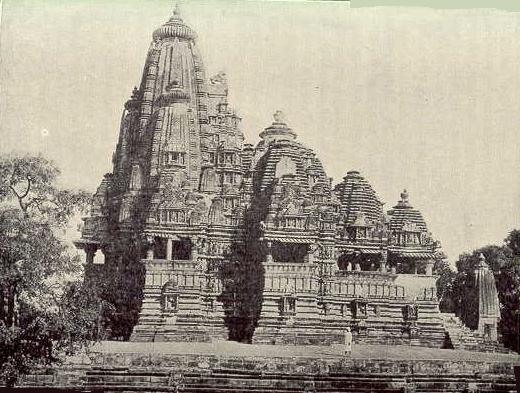
For a documentary on Hindu
temples, refer to The
Lost Temples of India.
Refer to chapter on Survarnabhumi
and Sacred
Angkor
***
In
the official court chronicle,
Maasiri Alamgiri,
which records numerous orders for and reports of destructions of temples. Its
entry for 2 September 1669 tells us:
"News
came to court that in accordance with the Emperor's command his officers had
demolished the temple of Vishvanath at Banaras".
Moreover, till today, the old Kashi Vishvanath temple wall is visible as a part
of the walls of the Gyanvapi mosque which Aurangzeb had built at the site. Aurangzeb
didn't stop at razing temples: their users too were leveled. There were not just
the classical massacres of thousands of resisters, Brahmins, Sikhs. What gives a
more pointed proof of Aurangzeb's fanaticsm, is the execution of specific
individuals for specific reasons of intolerance. To name the best-known ones:
Aurangzeb's brother Dara Shikoh was executed because of 'apostasy' (i.e. taking
an interest in Hindu philosophy), and the Sikh guru Tegh Bahadur was beheaded
because of objecting to Aurangzeb's policy of forcible conversions. Percival
Spear's statement is a most serious case of negationism. Now,
the great whitewash over the Muslim role in Indian history, carried out by
leftist historians, has been exposed.
(source:
Negationism
in India: Concealilng the Record of Islam - By Koenraad Elst
p. 49-50).
Watch History
of Ayodhya - videogoogle.com.
Why
did Aurangzeb demolish the Kashi Vishvanath ?
by Koenraad Elst,
Leuven
(Belgium), 21 November 1998 http://members.xoom.com/KoenraadElst/articles/aurangzeb.html).
Refer to Ignore
this genocide, we're secular - By Rajeev Srinivasan - rediff.com).
Refer to Heroic
Hindu Resistance to Muslim Invaders (636 AD to 1206 AD) - By
Sita Ram Goel. Voice of India, New Delhi.
Noble laureate V. S.
Naipaul says: " What is
happening in India is a new, historical awakening. Gandhi used
religion in a way as to marshal people for the independence cause
People who entered the independence movement did it because they
felt they would earn individual merit.
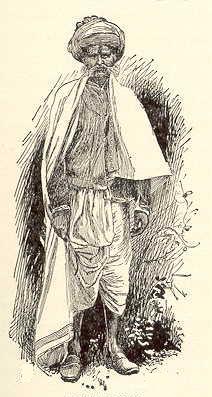 Today, it seems to me
that Indians are becoming alive to their history. Romila
Thapar’s book on Indian history is a Marxist attitude to
history, which in substance says: there is a higher
truth behind the invasions, feudalism and all that. The correct
truth is the way the invaders looked at their actions. They were
conquering, they were subjugating. And they were in a country
where people never understood this. Only now are the people
beginning to understand that there has been a great vandalizing of
India. Because of the nature of the conquest and the nature of
Hindu society such understanding had eluded Indians before. What
is happening in India is a mighty creative process. Indian
intellectuals, who want to be secure in their liberal beliefs, may
not understand what is going on, especially if these intellectuals
happen to be in the United States. But the sense of history that
the Hindus are now developing is a new thing. Some Indians speak
about a synthetic culture: this is what a defeated people always
speak about. The synthesis may be culturally true. But to stress
it could also be a form of response to intense persecution. Today, it seems to me
that Indians are becoming alive to their history. Romila
Thapar’s book on Indian history is a Marxist attitude to
history, which in substance says: there is a higher
truth behind the invasions, feudalism and all that. The correct
truth is the way the invaders looked at their actions. They were
conquering, they were subjugating. And they were in a country
where people never understood this. Only now are the people
beginning to understand that there has been a great vandalizing of
India. Because of the nature of the conquest and the nature of
Hindu society such understanding had eluded Indians before. What
is happening in India is a mighty creative process. Indian
intellectuals, who want to be secure in their liberal beliefs, may
not understand what is going on, especially if these intellectuals
happen to be in the United States. But the sense of history that
the Hindus are now developing is a new thing. Some Indians speak
about a synthetic culture: this is what a defeated people always
speak about. The synthesis may be culturally true. But to stress
it could also be a form of response to intense persecution.
(source:
An
area of awakening - Interview
by Dilip Padgaonkar
The Times of India,18 July 1993).
"I think when you see so many
Hindu temples of the tenth century or earlier time disfigured,
defaced, you know that they were not just defaced for fun: that
something terrible happened. I feel that
the civilization of that closed world was mortally wounded by
those invasions. And I would like people, as it were,
to be more reverential towards the past, to try to understand it;
to preserve it; instead of living in its ruins. The Old World is
destroyed. That has to be understood. The
ancient Hindu India was destroyed."
(source: Interview
by Sadanand Menon - The Hindu, 5 July 1998).
Marxist
writers have glorified Arab imperialism. M.
N. Roy, author of The
Historical Role of Islam,
1981, calls the "Arab Empire", a magnificent monuments to the memory
of Muhammed.
(source: On
Hinduism Reviews and Reflections - By Ram Swarup p. 42).
" While the Ottomans moved into
South-East Europe, the Moghul invasion of India destroyed much of
Hindu and Buddhist civilization there. The recent destruction by
Moslems in Afghanistan of colossal Buddhist statues is a reminder of
what happened to temples and shrines, on an enormous scale, when
Islam took over. The writer V. S. Naipaul
has recently pointed out that the destructiveness of the Moslem
Conquest is at the root of India's appalling poverty today. Indeed,
looked at historically, the record shows that Moslem rule has tended
both to promote and to perpetuate poverty."
(source: Relentlessly
and Thoroughly - By Paul Johnson National Review Online).
The
History of India as Told by its own Historians -
By Elliot and Dawson, paints a very grim picture of
Muslim hordes who attack the Pagans with merciless cruelty.
Gautam
Sen, who teaches in the London School of Economics & Political
Science, and is a member, Indo-UK Roundtable has written about history written
by India's Stalinist historians:
"The
Islamic conquest of India, by contrast, is regarded as no worse than
a temporary cricket pitch invasion, followed by the resumption of
normal play. The
Stalinist insistence, that past Islamic invasions of India were
inconsequential, is novel in the extreme, since such a belief about
the meaning of military conquest, is embraced by historians nowhere
else. Yet this remarkable fantasy is now an
axiom that has taken hold among a majority of American and British
academic specialists working on India as well. They are
also engaged in a grossly inaccurate chorus of denunciation of
Hinduism and its political manifestations as a calamity only barely
exceeded by Nazism."
(source: Righting
and rewriting Indian history - By Gautam Sen).
Refer to
Ignore
this genocide, we're secular - By Rajeev Srinivasan - rediff.com).
Columnist
Sandhya Jain observes:
"The
discerning reader would be savvy enough to realize that the
objective of Leftist scholarship is to prove, despite all available
evidence, that the Islamic invasion was really India's age of
enlightenment. Hence the denigration of the
Vedic Age and the stubborn insistence that the Aryans were not
indigenous people. This is why Bipan
Chandra protests if medieval Muslim rulers are described
as "foreign" Objecting to the "artificial
glorification of all and sundry who fought against Sultanate and
Mughal rulers", he derides glorification of ancient India as
"undue national pride (which) has its own negative
aspects".
(source:
A
history of impotent rage - By Sandhya Jain
The Daily Pioneer).
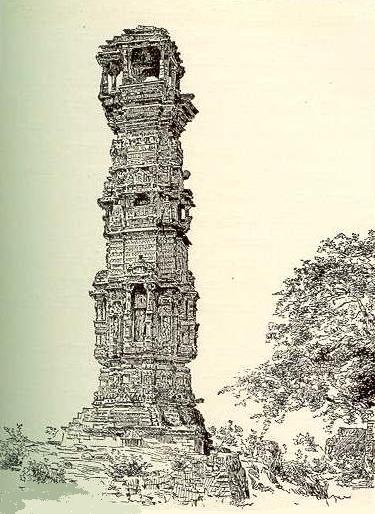
The Chittor Tower
of Victory, a nine storey structure built by Maharana Kumbha of
Mewar -
Chittorgarh
Rajput women
committed mass suicide to save their honour in the face of the
imminent entry of victorious Muslim armies, e.g. 8,000 women
immolated themselves during Akbar's capture of Chittorgarh in 1568
(where this most enlightened ruler also killed 30,000
non-combatants).
***
"The
killing of men and enslaving of women and children was standard
practice in Islamic conquests. Thus when Mohammed bin Qasim
conquered the lower Indus basin in AD 721, he entered Multan and,
according to the Chach-Nama,
"6,000 warriors were put to death, and all their relations and
dependents were taken as slaves." This
is why Rajput women took to immolating themselves en masse to save
their honor in the face of the imminent entry of victorious Muslim
armies, eg. 8,000 women
immolated themselves during Akbar's
capture of Chittorgarh in 1568
(whereas this most enlightened among Muslim rulers also killed
30,000 non-combatants).
Even peacetime was not all that
peaceful, for as Fernand Braudel
wrote in his book, A
History of Civilization,
"Islamic rule in India as a
"colonial experiment" was
"extremely violent", and "the Muslims
could not rule the country except by systematic terror. Cruelty was
the norm - burnings, summary executions, crucifxions or impalements,
inventive tortures. Hindu temples were destroyed to make way for
mosques. On occasion there were forced conversions. If ever there
were an uprising, it was instantly and savagely repressed: houses
were burned, the countryside was laid waste, men were slaughtered
and women were taken as slaves."
Alauddin
Khilji is
hailed by secularist historians as India's first socialist,
and with reason. "Alauddin is notorious for having pauperized
the Hindus to the utmost limit", in a deliberate policy of
pushing the Hindus so deep into material hardship that they would be
too busy with sheer survival to even think of rebellion." While
the earlier Muslim writers had described Indian prosperity, after
the establishment of the Sultanate the population got impoverished,
and remained so under the Moghuls: "The poverty of Indians was
noticed in the later periods by foreigners."
(source: The
Saffron Swastika - By Koenraad Elst
Voice of India 2001 ISBN 8185990697 p. 824-826).
Refer to Heroic
Hindu Resistance to Muslim Invaders (636 AD to 1206 AD) - By Sita Ram Goel.
Voice of India, New Delhi.
Secularism and India
The
renewed secular jihad declared by the media in the wake of the Gujarat backlash
accuses Hindutva of communalising the atmosphere in the country.
Liberal
intellectuals can afford to do so only because they are safe in a country whose
frontiers are defended by a Hindu army. In an imaginary case scenario they could
not have preached this secularism under the reigns of Allauddin Khilji,
Giyasuddin Tughlak, Babur or Aurengzeb. They cannot do so even in Srinagar, let
alone Islamabad or Dhaka for even though secularism is dear to them, life is
dearer than secularism.
Was
there something ironic when 57 innocent pilgrims were scorched to death inside
the Sabarmati express, when the name Sabarmati had become synonymous with peace,
non-violence and tolerance? On the other hand the carnage was actually a product
of the political Gandhianism of minority appeasement that emanated from
Sabarmati in the 1920s and 30s.
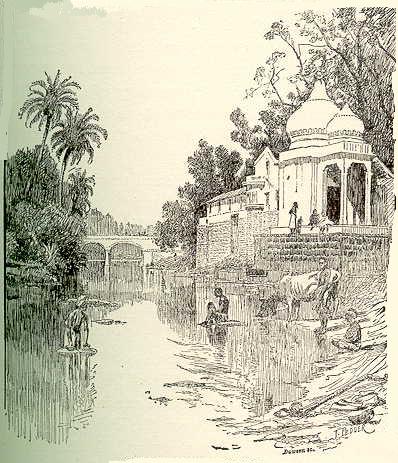
(image
source: History of
India - By A V Williams Jackson).
***
Marxist attitude to History
In an interview, V. S. Naipaul: I don't see it quite
in that way. The things you mentioned are quite superficial. What is happening
in India is a new, historical awakening. Gandhi used religion in a way as to
marshal people for the independence cause. People who entered the independence
movement did it because they felt they would earn individual merit.
Today,
it seems to me that Indians are becoming alive to their history.
Romila Thapar's book on Indian history is a Marxist attitude to history
which in substance says: there is a higher truth behind the invasions, feudalism
and all that. The correct truth is the way the invaders looked at their actions.
They were conquering, they were subjugating.
And they were in a country where people never understood this.
Only now are the people beginning to understand
that there has been a great vandalising of India. Because of the nature of the
conquest and the nature of Hindu society such understanding had eluded Indians
before.
What is happening in
India is a mighty creative process. Indian intellectuals, who want to be secure
in their liberal beliefs, may not understand what is going on, especially if
these intellectuals happen to be in the United States. But every
other Indian knows precisely what is happening: deep down he knows that a larger
response is emerging even if at times this response appears in his eyes to be
threatening.
But
the sense of history that the Hindus are now developing is a new thing.
Some Indians speak about a synthetic
culture: this is what a defeated people always speak about. The synthesis may be
culturally true. But to stress it could also be a form of response to intense
persecution. In Ayodhya the construction of a mosque on a spot regarded as
sacred by the conquered population was meant as an insult. It was meant as an
insult to an ancient idea, the idea of Ram which was two or three thousand years
old.
(source: An
area of awakening - An interview with Sir V. S. Naipaul - By
Dileep Padgaonkar, The Times of India, July 18, 1993).
As
Naipaul observes, post-conversion, there is a tendency to obliterate the past.
(source:
Secularism and India Inc
-
Priyadarsi Dutta -
Dailypioneer.com).
Swami
Vivekananda talking about Muslims, the monk says they "brought
murder and slaughter in their train and until then peace prevailed
in India".
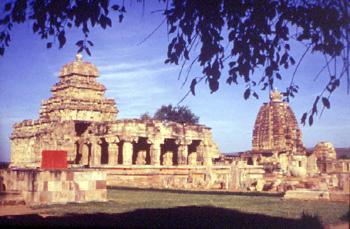 Here is what
Sri Aurobindo had to say on Islam in a letter to a
disciple on September 12, 1923: "The Mahomedan or Islamic
culture hardly gave anything to the world which may be said to be
of fundamental importance and typically its own.... I do not think
it has done anything more in India of cultural value. It gave some
new forms to art and poetry. Its political institutions were
always semi-barbaric." Here is what
Sri Aurobindo had to say on Islam in a letter to a
disciple on September 12, 1923: "The Mahomedan or Islamic
culture hardly gave anything to the world which may be said to be
of fundamental importance and typically its own.... I do not think
it has done anything more in India of cultural value. It gave some
new forms to art and poetry. Its political institutions were
always semi-barbaric."
(source:
The
Hindu Soul in search of Its Body - Balbir Punj).
Sir
Sidney Low (1857-1932) writes about Benares:
"Benares
is the metropolis of Hinduism...and like a queen, Benares sits by
the Ganges, albeit a queen with purple robes somewhat patched and
tattered and a throne of ivory and clay.
The
stream of the sacred river sweeps past in a wide crescent of pale
yellow water, and Kashi, 'the Splendid,'
as the Hindus call the city...."
"The
Mohammedans tramped heavily on Kashi, and most of its older
shrines disappeared. If you want to see the true
memorials of Hindu art, in its stronger days, you must go
elsewhere, to Madura or Tanjore or Congevaram or to the temples of
Ellora, enriched with sculptured figures almost Hellenic in their
austere simplicity. Benares, like Rome, has passed under the hoof
of the spoiler."
But
Aurangzeb, the iconoclast, broke the idols of the sacred city in
vain."
(source:
A
Vision of India - By Sir Sidney Low 1911 p.
263-266. For more information refer to infinityfoundation.com).
Refer to Heroic
Hindu Resistance to Muslim Invaders (636 AD to 1206 AD) - By
Sita Ram Goel. Voice of India, New Delhi.
Ayodhya
and End of Negationism
Here is just one example from the 19th century,
written by Mirza Jan, the author of a
historical work known as Hadiquah-I-Shuhada
that appeared in 1856:
“…wherever they found magnificent temples of the
Hindus….the Muslim rulers in India built mosques, monasteries, and inns,
appointed mu’assins, teachers and store-stewards, spread Islam vigorously, and
vanquished the Kafirs. Likewise they cleared up Faizabad and Avadh (Ayodhya),
too from the filth of reprobation (infidelity), because it was a great center of
worship and capital of Rama’s father. Where they stood a great temple of (Ramajanmasthan),
there they built a big mosque…what a lofty mosque was built there by king
Babar!”
Some of the old sources used by Mirza Jan have yet to be
unearthed, but one which he quotes from a Persian work known as Sahifah-I-Chihal
Nasa’ib Bahadurshahi written in 1707 by a grand-daughter of the Moghur emperor
Aurangazeb is particularly interesting. The Moghul princess declares:
“…keeping the triumph of Islam in view, devout Muslim
rulers should keep all idolators in subjection to Islam, brook no laxity in
realization of Jizyah (religious tax on Hindus), grant no exceptions of Hindu
Rajahs from dancing attendance on Id days and waiting on foot outside mosques
till end of prayer…and keep in constant use for Friday and congregational
prayer the mosque built up after demolishing the temples of the idolatrous
Hindus situated at Mathura, Banaras and Avadh…”
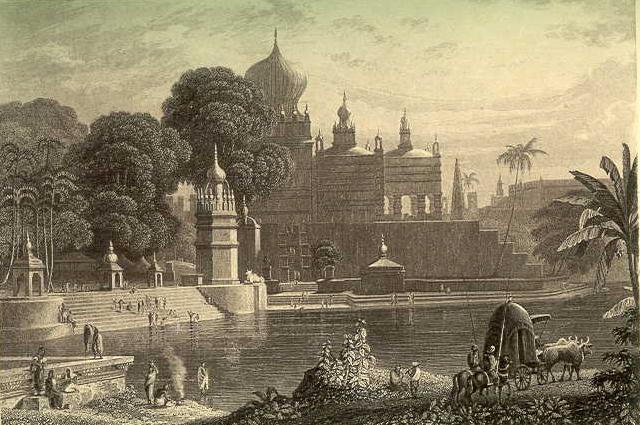
Dharwar -
near Pune
(image
source: History of
India - By A V Williams Jackson)
***
The Encyclopedia Britannica volume
1, 1985. 15th edition, has to say about Ayodhya:
“There are few monuments of any antiquity. Rama’s
birthplace is marked by a mosque, erected by the Moghul emperor Babur in 1528 on
the site of an earlier temple.
This leaves no doubt that all regarding either the fact of
the temple destruction, or the motives behind their destruction – especially
of the holiest of them, situated at Mathura, Benares and Ayodhya. In the face of
such overwhelming evidence, it is an exercise in futility to try to deny it.
Negationism is simply not an option.
It is important to remember the point made by Sir
V. S. Naipaul, author of India:
A Wounded Civilization (Vintage Books ISBN 1400030757) that the Ayodhya demolition must be
viewed as a symbol of awakening historical awareness on the part of the Hindus.
To the Hindus, the site is hallowed by the birth of their hero, Rama, regarded
by them as the embodiment of truth, generosity, bravery, chivalry and an
incarnation of God Vishnu. It is a sacred spot. Hindus will not forget history. And writers, intellectuals,
and journalists who are ignoring this are failing in their responsibility. They
are taking the easy way out by hiding behind slogans like ‘Secularism’ and
platitudes like “We must not reopen the wounds of history.” This is not
scholarship, but cowardice.
Every living nation has national symbols and Ayodhya is one
of India’s. Just like an American would not let stand a mosque built by
someone after demolishing Mount Vernon (George Washington’s home) or the
Statue of Liberty, which Americans see as a national monument, same way for
Hindus, it is a sacred spot.
(source:
A
Hindu View of the World - By N. S. Rajaram and Profiles
in Deception - By N. S. Rajaram ISBN: 81-85990-65-4). Refer
to Heroic
Hindu Resistance to Muslim Invaders (636 AD to 1206 AD) - By Sita Ram Goel.
Voice of India, New Delhi.
Ayodhya
and Integration of Hindu Society - Please
refer to Koenraad Elst excellent book
- Ayodhya
and After - By Koenraad Elst).
Page < 1 2 3 4 5 6 7 8 9 10 11 >
|